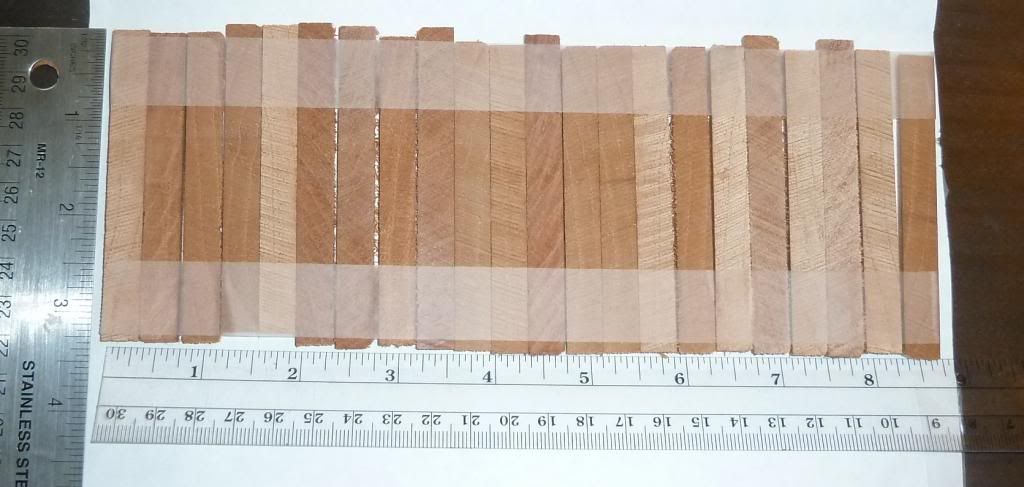ChemE
Well-Known Member
I've been thinking about brewing a nice fall/winter beer with cedar for a long time now because I love the smell of the wood so much but there is very very little information on the web pertaining to how one goes about incorporating this ingredient into a beer. I intend this thread to serve as a clearing house for what I learn as well as what anyone else can contribute.
First things first; one does not actually brew with cedar but rather Spanish Cedar (Cedrela odorata) which interestingly is neither Spanish nor is it cedar. It is actually Brazilian Mahogany! I obtained my 3/8" Spanish cedar from Rockler Woodworking for $9 per board foot Item #18392. What arrived was 8 pieces of Spanish cedar 6.5" long and 3.25" wide and 3/8" thick.
I've decided in order to make my experimentation with quantity easy to turn the boards into 3/8" cubes. Apparently beer and wine are capable of soaking 1/4" (6mm) into wood and so if that holds true then the entire volume of my 3/8" cubes will interact with the beer. I took a few pictures of my compound miter box while I was going through this process to show others one method of making cubes from these boards. The difficulty when working with such small pieces of wood is keeping them contained and more importantly staying safe.
Pile of Spanish cedar cubes obtained from two boards
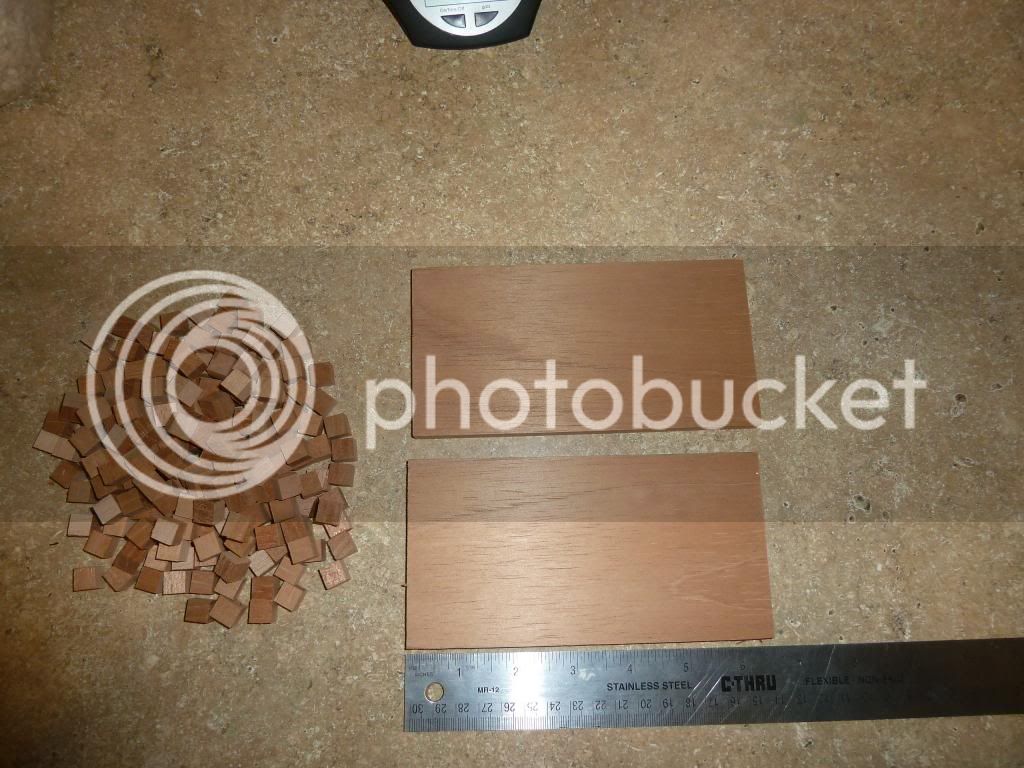
Two 6.5" x 3.25" x 3/8" boards turned into the pile of cubes in the picture above. The pile weighs 2.75 oz which if oak is any guide should be plenty enough for a five gallon batch of beer (I'll know in a few months).
To cut the cubes I clamped some scraps to each fence on my compound miter saw so that only the blade kerf is missing from the fence. This prevents the cubes from shooting backwards once they are cut free. I also clamped a stop block 3/8" from the blade which controls the final dimension of the cubes. Finally, I clamped another scrap 1"x2" just to the right of the blade and above the cubes. This keeps the cubes neatly contained after the cut. Without this block some of the cubes would vibrate, get twisted, pinch between the blade and the stop block, and shoot somewhere. In the photo below you can see 3/8" strips cut from the board on the left side of the frame as well as 8 strips stacked and in the process of being cut into cubes.
The jig used to cut strips and blocks
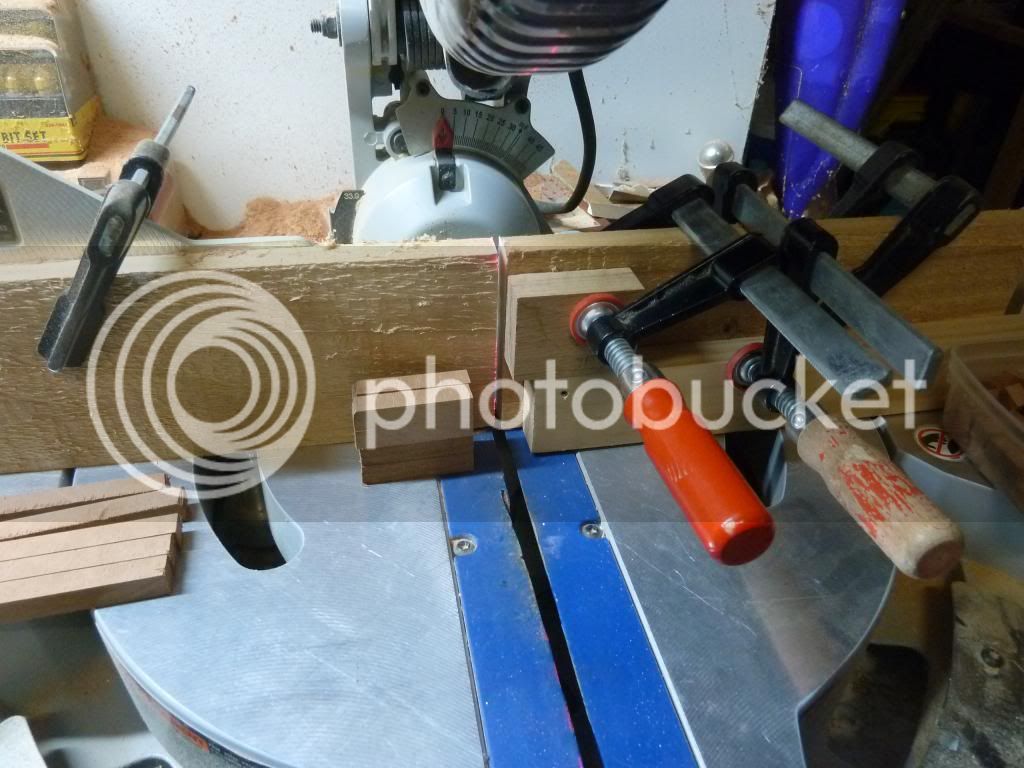
Strips pressed against stop block and ready to be cut
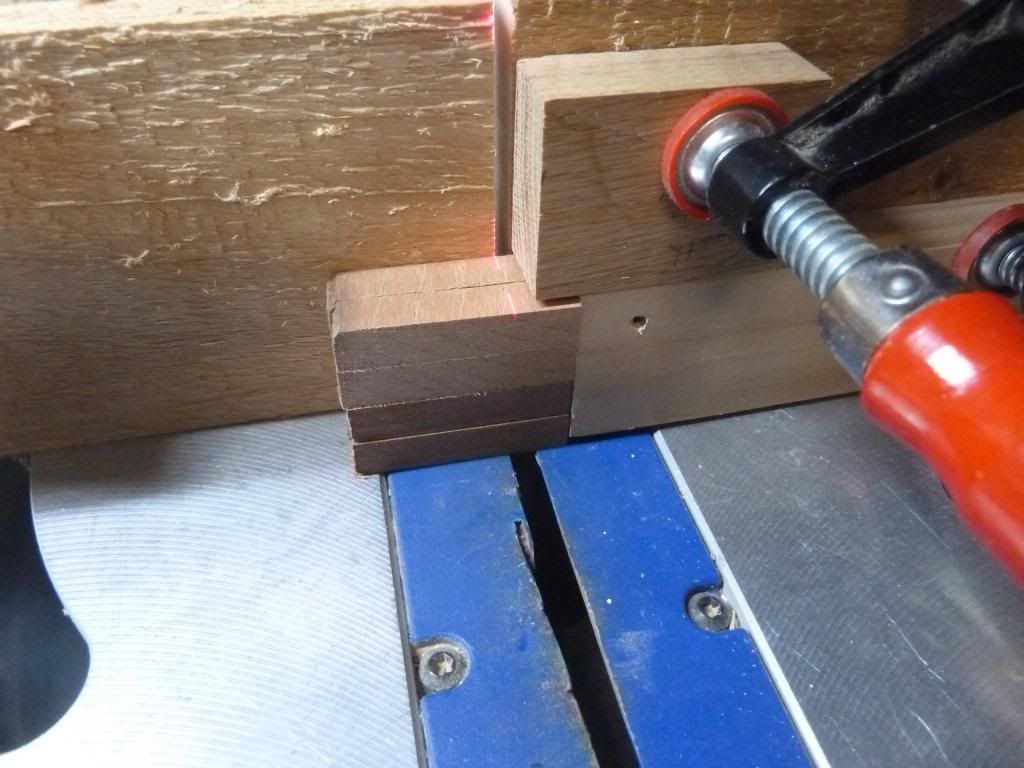
Note that in the image above the blocks will be safely trapped between the upper block, stop block, and the blade.
After the cut
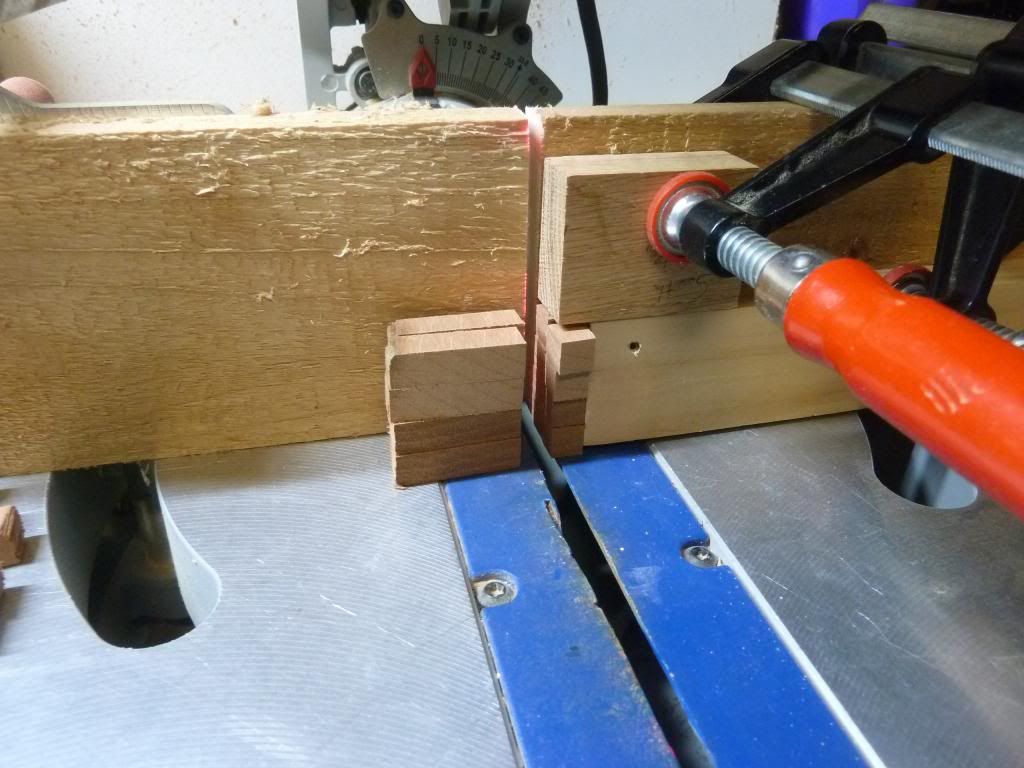
8 neatly cut blocks all perfectly 3/8" on each side! As the strips get shorter and shorter your fingers move closer and closer to the blade. Once I get within a few inches of the blade it is time to move to plan B for holding the strips. I just used a long scrap of wood to press the stack into the table to make the final few cuts as pictured below.
Holding for the final cut
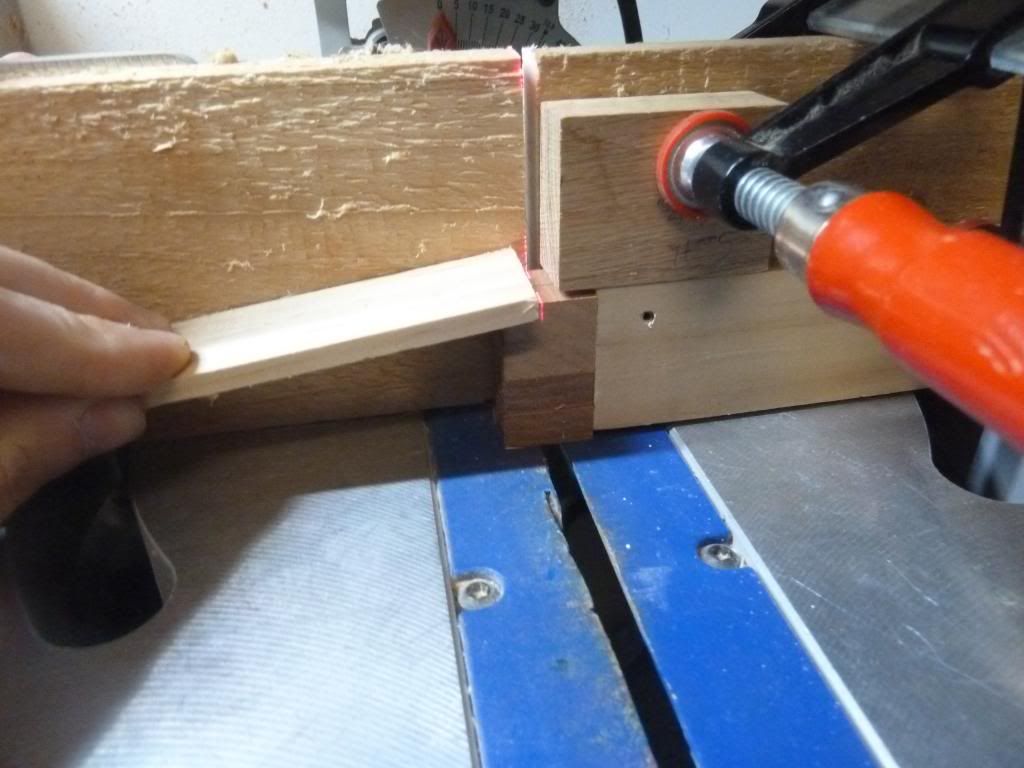
Brew day is tomorrow and I plan to add the Spanish cedar cubes to the fermenter after two weeks or so. I haven't decided yet on contact time or whether or not to toast the cubes. I did make a weak tea with a little water and one cube and it tasted nice. It had a good woodsy aroma with some bitterness on the nose and spiciness on the finish. I'm not planning a huge BU/GU ratio (0.507) for the beer as I suspected the wood would increase the bitterness.
If anyone has any recipes or experience brewing with this wood, I'll be happy to add them to this post.
First things first; one does not actually brew with cedar but rather Spanish Cedar (Cedrela odorata) which interestingly is neither Spanish nor is it cedar. It is actually Brazilian Mahogany! I obtained my 3/8" Spanish cedar from Rockler Woodworking for $9 per board foot Item #18392. What arrived was 8 pieces of Spanish cedar 6.5" long and 3.25" wide and 3/8" thick.
I've decided in order to make my experimentation with quantity easy to turn the boards into 3/8" cubes. Apparently beer and wine are capable of soaking 1/4" (6mm) into wood and so if that holds true then the entire volume of my 3/8" cubes will interact with the beer. I took a few pictures of my compound miter box while I was going through this process to show others one method of making cubes from these boards. The difficulty when working with such small pieces of wood is keeping them contained and more importantly staying safe.
Pile of Spanish cedar cubes obtained from two boards

Two 6.5" x 3.25" x 3/8" boards turned into the pile of cubes in the picture above. The pile weighs 2.75 oz which if oak is any guide should be plenty enough for a five gallon batch of beer (I'll know in a few months).
To cut the cubes I clamped some scraps to each fence on my compound miter saw so that only the blade kerf is missing from the fence. This prevents the cubes from shooting backwards once they are cut free. I also clamped a stop block 3/8" from the blade which controls the final dimension of the cubes. Finally, I clamped another scrap 1"x2" just to the right of the blade and above the cubes. This keeps the cubes neatly contained after the cut. Without this block some of the cubes would vibrate, get twisted, pinch between the blade and the stop block, and shoot somewhere. In the photo below you can see 3/8" strips cut from the board on the left side of the frame as well as 8 strips stacked and in the process of being cut into cubes.
The jig used to cut strips and blocks

Strips pressed against stop block and ready to be cut

Note that in the image above the blocks will be safely trapped between the upper block, stop block, and the blade.
After the cut

8 neatly cut blocks all perfectly 3/8" on each side! As the strips get shorter and shorter your fingers move closer and closer to the blade. Once I get within a few inches of the blade it is time to move to plan B for holding the strips. I just used a long scrap of wood to press the stack into the table to make the final few cuts as pictured below.
Holding for the final cut

Brew day is tomorrow and I plan to add the Spanish cedar cubes to the fermenter after two weeks or so. I haven't decided yet on contact time or whether or not to toast the cubes. I did make a weak tea with a little water and one cube and it tasted nice. It had a good woodsy aroma with some bitterness on the nose and spiciness on the finish. I'm not planning a huge BU/GU ratio (0.507) for the beer as I suspected the wood would increase the bitterness.
If anyone has any recipes or experience brewing with this wood, I'll be happy to add them to this post.


